Ceramics and Pottery: Western - WIP
1/52
There's no tags or description
Looks like no tags are added yet.
Name | Mastery | Learn | Test | Matching | Spaced |
|---|
No study sessions yet.
53 Terms
Black Figure Ware
Greek vases which have figures painted in black on a red background.
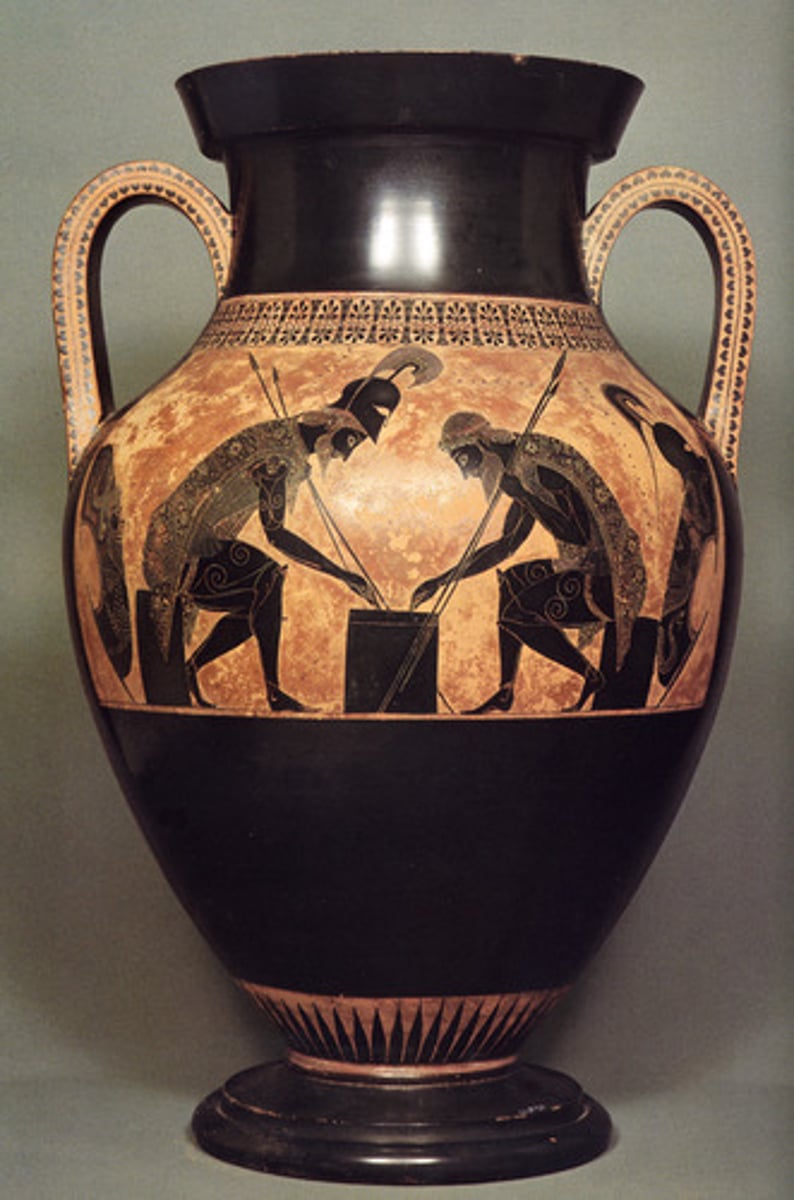
Red Figure Ware
Greek vases which have figures painted in red on a black background.
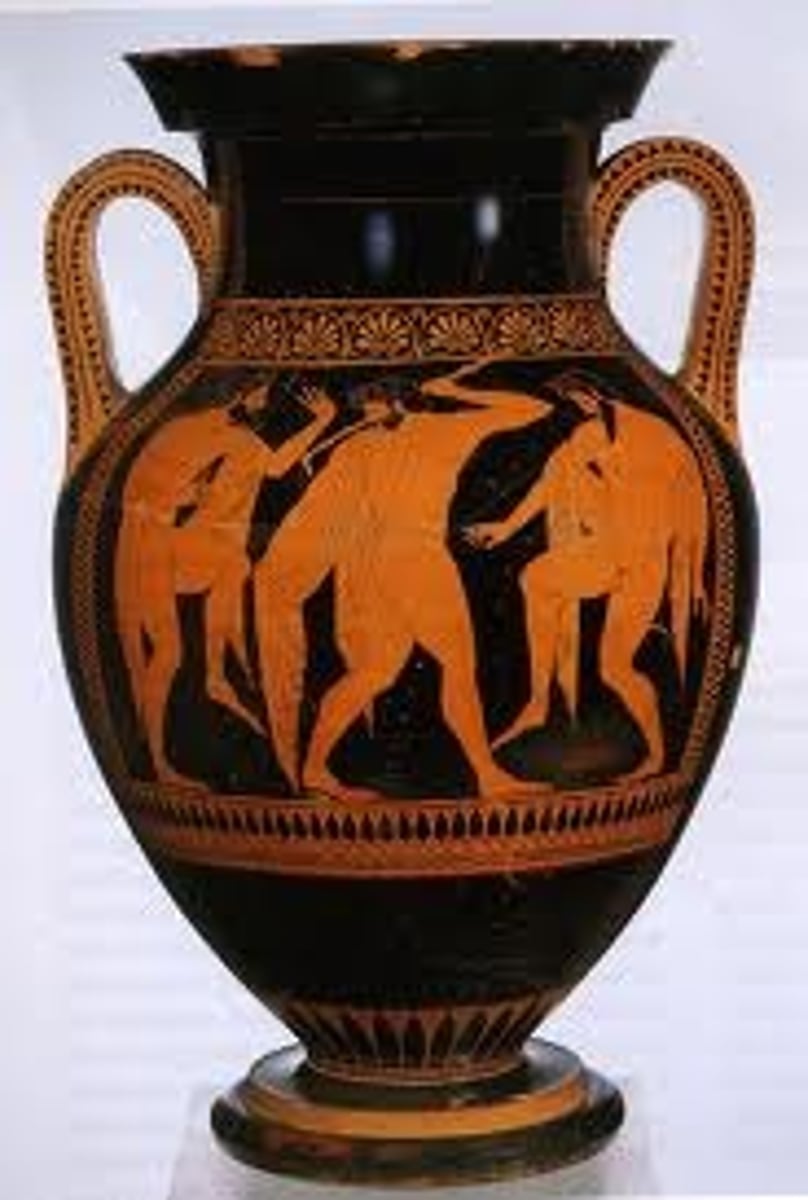
White Ground Ware
Greek vases with figures that are painted either red or black on a white background.
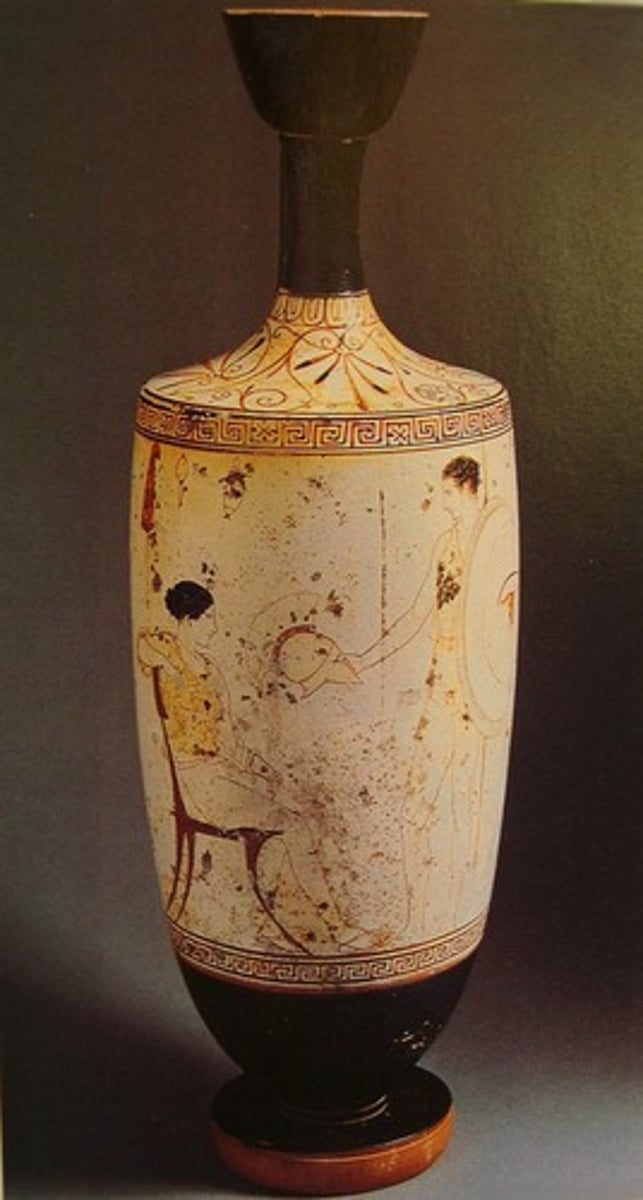
Maiolica
Fine earthenware with colored decoration on an opaque white tin glaze, originating in Italy during the Renaissance.

Mezzo-maiolica
Early 12th Century maiolica wares with coarse bodies covered with white slip which was painted, sometimes lustered and decorated with sgraffito.
Florence
This city led the production of majolica in the 15th Century, which represented a technical and aesthetic advancement learned from Islamic Spain.
Istoriato
It is a style of decoration on Italian majolica pottery, in which a painted scene, usually of a mythical, historical, or biblical subject, covers the entire surface. This reached its zenith in the last third of the 16th Century at Urbino.

Bianchi di Faenza
Lightly decorated white wares made in Faenza which continued the tradition of fine craftsmanship and tradition of new designs after the decline of maiolica.
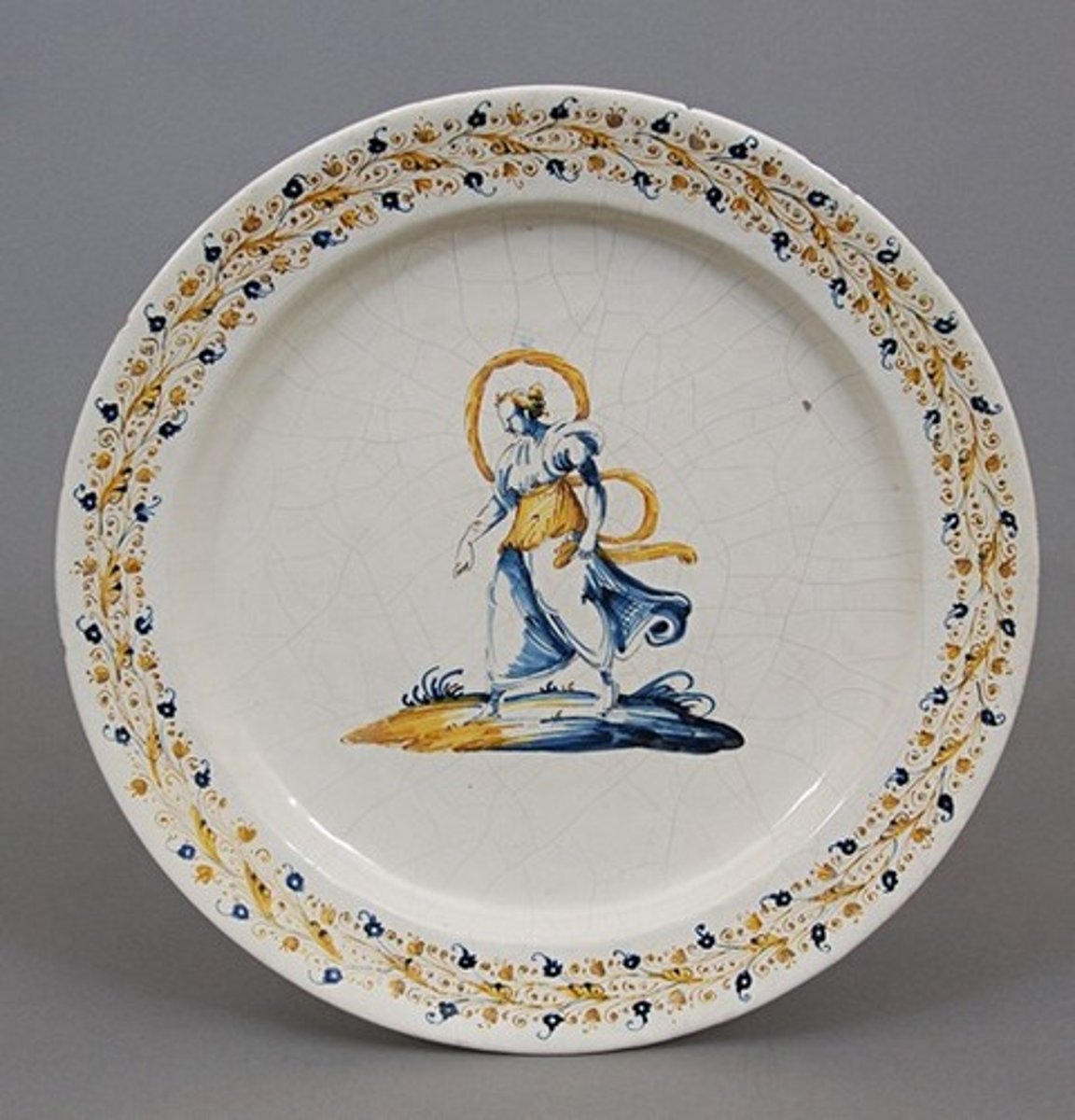
Passeri
An Italian antiquary of distinction who claimed the discovery and introduction of the ware for Pesaro. Recorded the art of pottery-making in Italy as early as the 13th C. Affixes the date 1492 to the introduction of Majolica ware.
Lucca della Robbia
Successful Florentine goldsmith and sculptor. He discovered stanniferous enamel, the hardest glaze then in use. He was credited to have raised the production of majolica from a craft to high art in Italy.
Master Giorgio Andreoli
He was known to have perfected the luster technique to a point that he was frequently hired to embellish the work of other workshops, which was a very unusual practice during that time. After adorning the works of other masters, he often signed the pieces himself.
Francesco de Medici
Grand duke of Tuscany who produced an inferior type of soft-paste porcelain in his Florence workshop in the 16th century.
Francesco Vezzi
Established a porcelain factory in Venice during the 1720s which produced hard-paste porcelain which produced a lot of teapots in chinoiserie style.
Chinoiserie
The imitation or evocation of Chinese motifs and techniques in Western art.
Doccia ware
Porcelain produced at a factory near Florence founded by Marchese Carlo Ginori in 1735. They produced admirable imitation of majolica and successful reproduction of the bas reliefs of Della Robia. Its prinicipal mark was a six-pointed star, sometimes in gold.
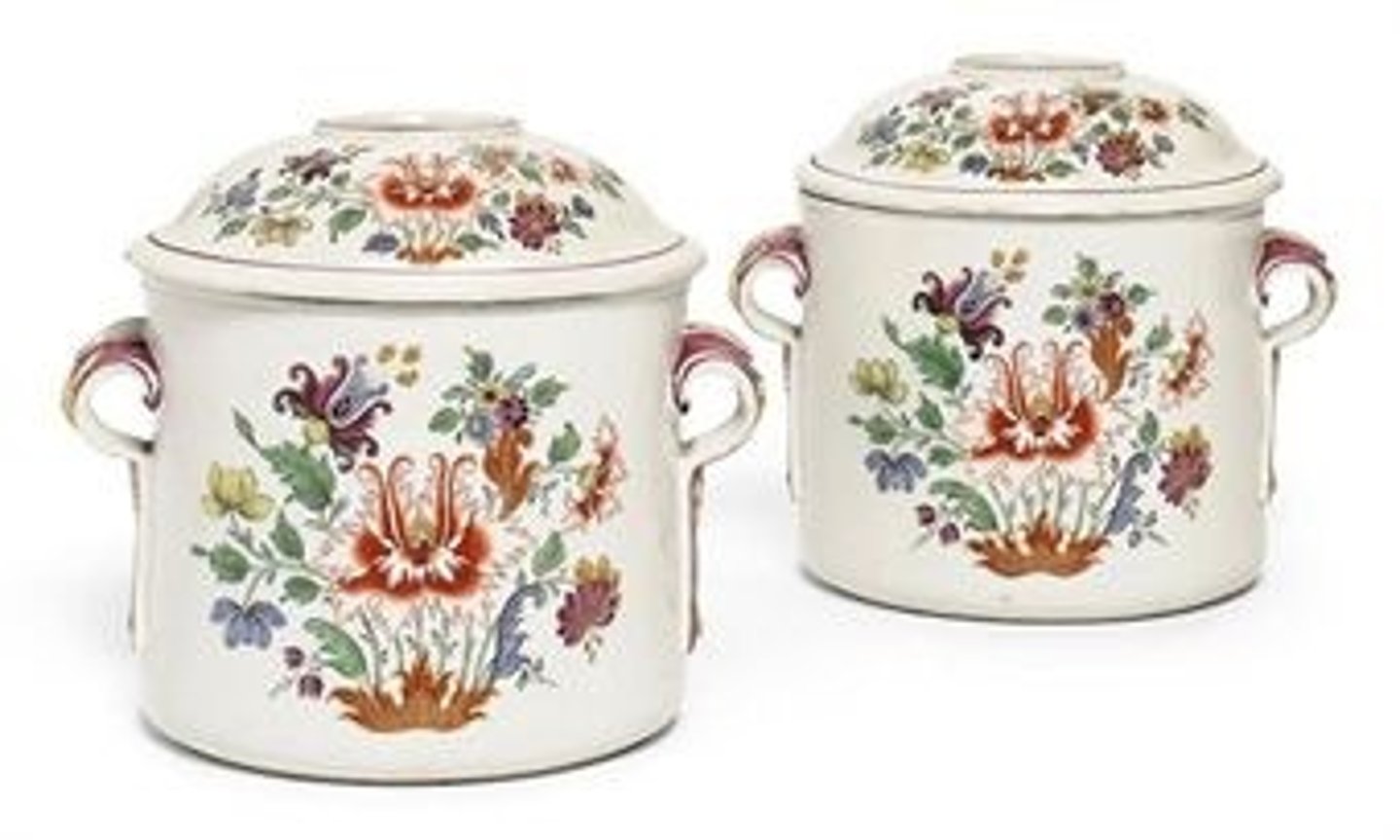
tulipano
Stylized, painted floral pattern decoration on Doccia ware.
Capo di Monte
Porcelain manufactory founded by Charles III in Naples. They developed a formular for a distinctive soft-paste porcelain body that is characterized by a pronounced creamy color and an unusually glossy clear glaze. It became one of the most outstanding factory for early Italian porcelain.
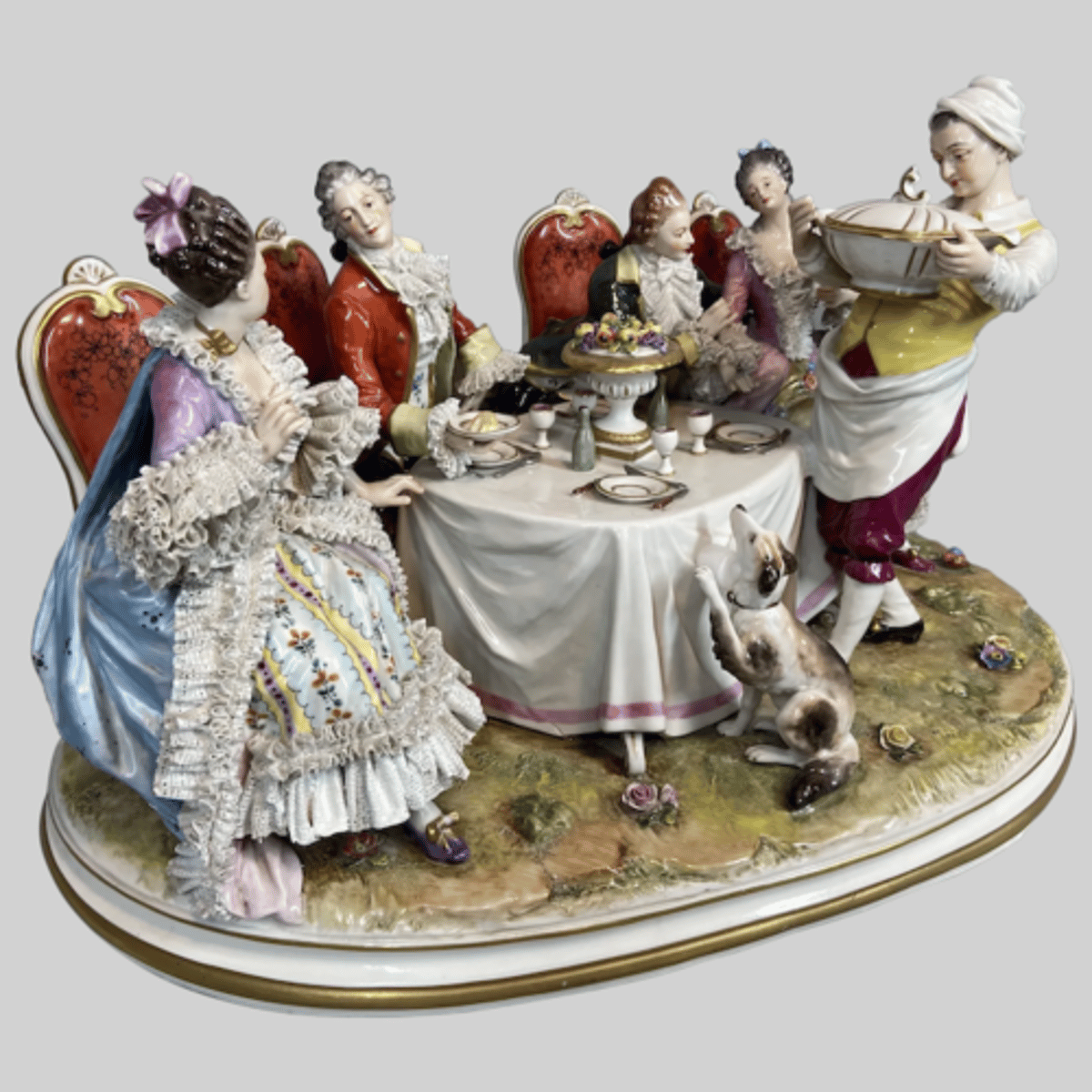
N surmounted by a crown in blue
Capodimonte mark
Commedia dell'arte
A professional form of theatrical improvisation, developed in Italy in the 1500's, featuring stock characters and standardized plots. This became a limitless source of subjects for both porcelain modelers and painters.
Delftware
Tin-glazed earthenware made in Delft in the 17th century, typically having blue decoration on a white ground. These were made by master craftsmen and were entirely handpainted.
Delft blue
A style of glazed earthenware pottery, usually blue and white, originally made in Delft, Netherlands.
Delft polychrome
Multi-colored Dutch ceramics copying Kang-hsi and Japanese Imari wares.
De Koninklijke Poreceleyne Fles
Only remaining original producer of Dutch delftware.
It translates to Royal Porcelain Jar with a stylized jar logo.
Peasant Delft
This pertains to a type of delftware that is rather distinctive in the way in which the decoration is treated. It has a very broad style of painting with very simplified motifs and less careful execution; giving the impression that it was done in haste.
Amstel
Dutch Porcelain manufactory which started at Weesp near Amsterdam. Their porcelain had a fine white body, and said to be of the best quality closely resembling the body of Dresden China which suited the tastes of the bourgeois.
Hague
Porcelain manufactory started by the Lijncker family in Hague, Holland. It started out by selling ceramics and textile. Later, work began on decorating and refiring porcelain blanks produced elsewhere which was decorated by porcelain painters recruited abroad.
bleu-de-roi
Royal blue with rich gilding; decorations of Hague table services painted by porcelain painters recruited abroad.
Faience
Tin-enameled earthen wares which date back to ancient times. The term began to gain general use when the French started producing it.
terre de pipe
A favorite earth in French pottery; its pure whiteness and fineness affording excellent qualities which went far towards perfecting the French styles of decoration.
Fayence d'Oiron
Also known as Henri II ware or Saint-Porchaire ware. It is said to be the very first high quality French pottery, made for an exclusive French clientele. The paste used is a true pipe clay, very fine, and very white with a thin lead-glaze that is transparent and of yellowish gold tint.
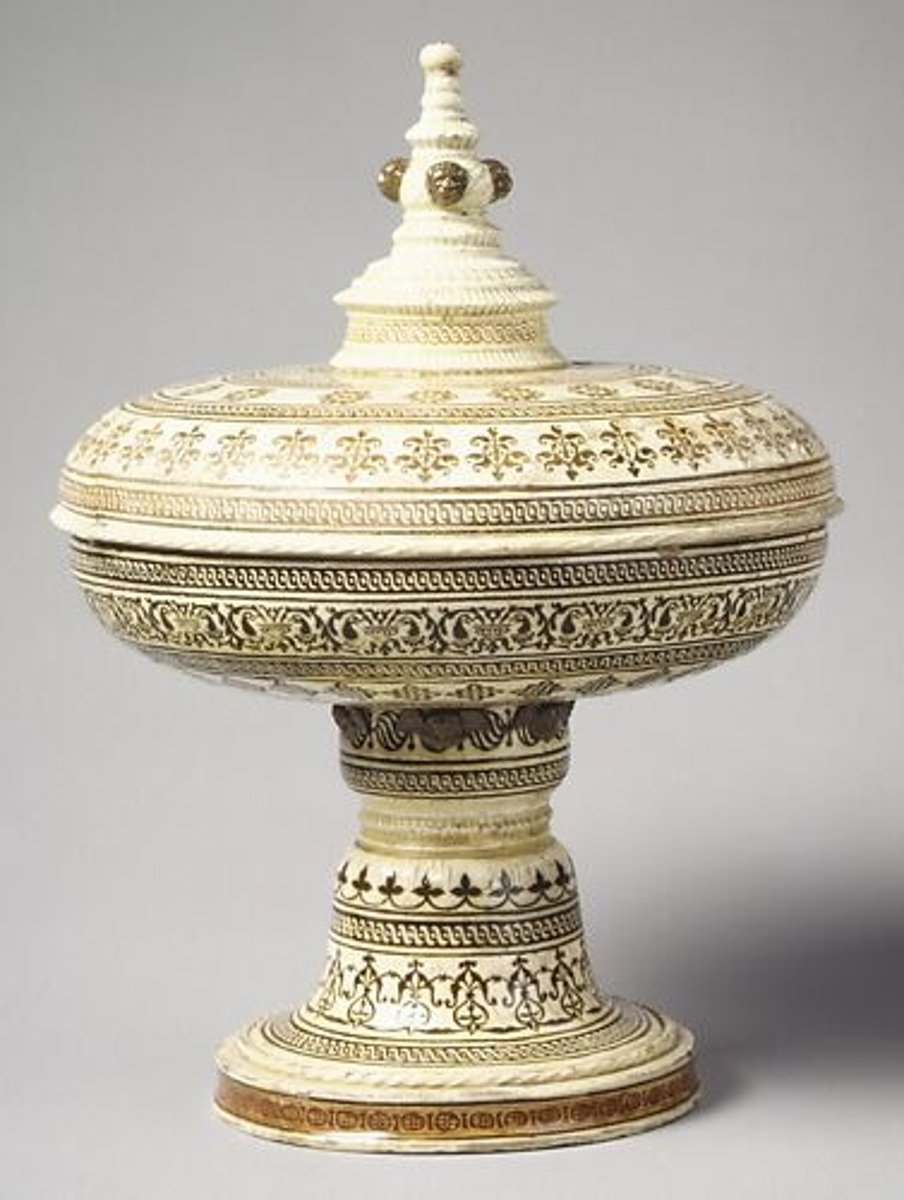
Bernard Palissy
Succeeded in producing a widely imitated pottery, admired for smooth glazes in richly colored enamels. He was appointed as royal potter to Catherine de Medici reproducing scriptural and mythological subject in low relief and for his rustic pieces decorated with sharply modeled forms copied from nature.
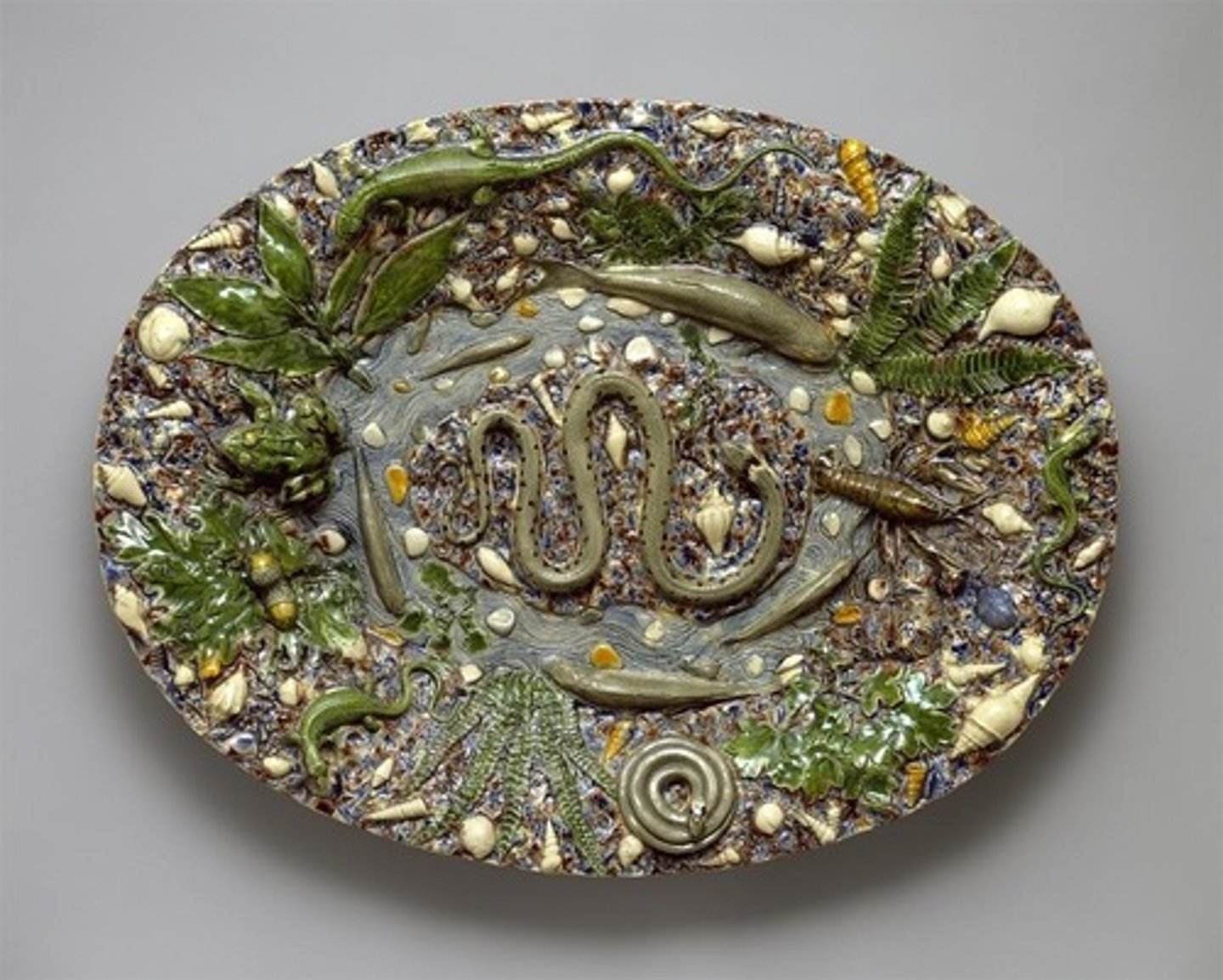
Rouen
Faience factory in owned by the Poterat family which experimented in making the earliest examples of soft-paste porcelain made in France.
Saint-Cloud
Faience factory which also experimented in making soft-paste porcelain the same years as Rouen. It closely imitated Chinese blue-and-white porcelain but later had initiated a wholly French style of decoration derived from prints.
Chantilly
Louis Henry, the duc de Bourbon, established this soft-paste porcelain factory. They produced direct copied of Japanese pieces, with some executed in a style reminiscent of Japanese porcelain.
Mennecy
Short-lived French factory with roots in small ceramic enterprise founded by François Barbin in Villeroy. It produced utilitarian ware with considerable originality and naïve charm.
Sevres
Soft-paste porcelain factory originally founded at Vincennes in 1740. Developed a body that was white and freer of imperfections than any of its French rivals. It attracted Louis XV and provided some financial backing.
Limoges
The first French hard-paste porcelain factory established in 1774 after the discovery of kaolin in France. By the 1800s, it was making the fines, purest, white porcelain in the world.
Hafner ware
A German lead-glazed earthenware, popular in 16th cent. and 17th cent.
Poterie deluxe
German pottery exceedingly fine in color, form and ornament. Highest eminence which German pottery reached.
Johann Friedrich Böttger
Discovered the material required to produce a white, translucent, high-fired porcelain body. This was to have profound consequence for the entire European ceramic industry.
Dresden ware
Porcelain ware, especially delicate and elegantly decorative objects and figures of high quality, made at Meissen
Böttger porcelain
Creamy white hard-paste porcelain.
Meissen
First European manufactory producing hard-paste porcelain that was developed from 1708 by Ehrenfried Walther von Tschirnhaus.
Japanese Palace
Augustus the Strong's palace which was furnished by ceramics in the shape of large-scale animals by Meissen, making it their most ambitious projects.
Claudius de Paquier
He founded the second factory in Europe to produce hard-paste porcelain in Vienna.
du Paquier porcelain
Similar to that produced at Meissen, but their forms and styles of decoration employed at the Viennese factory were completely original.
tureen
A deep covered dish from which soup is served.
sucriere
A small bowl designed for holding sugar or sugar cubes, to be served with tea or coffee in the Western tradition.
Hispano Mauresque
Also known as luster earthenware; refers to wares with Arabic inscriptions, arabesques, and stylized animal forms, characterized by indescribable sheen and iridescence.
It is a synthesis of Near Eastern and European styles. Heavy earthenware usually decorated with crude patterns in green-blue, yellow, white and lustreware.
Albarelli
A type of majolica earthenware jar, originally a medicinal jar designed to hold apothecaries' ointments and dry drugs.
Alcora
Important fayence manufactory at Valencia founded by the Count of Aranda in 1726. It produced a number of excellent busts and a magnificent portrait of the Count of Aranda.
Azulejos
A form of Portuguese and Spanish painted tin-glazed ceramic tiles with a generally bluish hue and geometric patterns. They are found in churches, houses, restaurants, etc. They were not only used as as an artform, but also had specific functional quality like temperature control.
Buen Retiro/El Retiro
Spanish soft-paste ware, most costly and most technically perfect. Delicate white and more than usually translucent.
Counterpart of the Capodimonte factory in Italy.